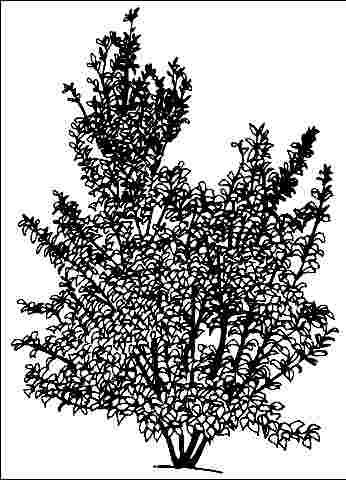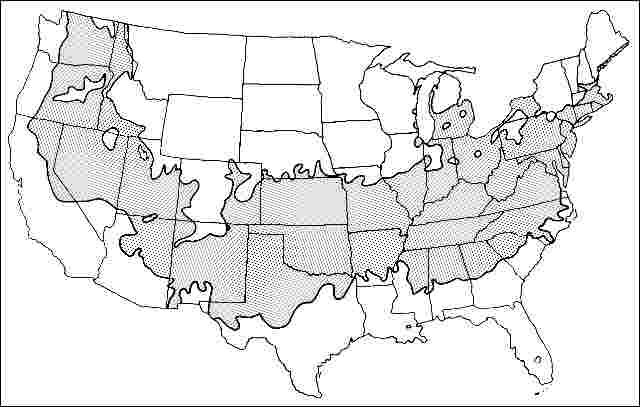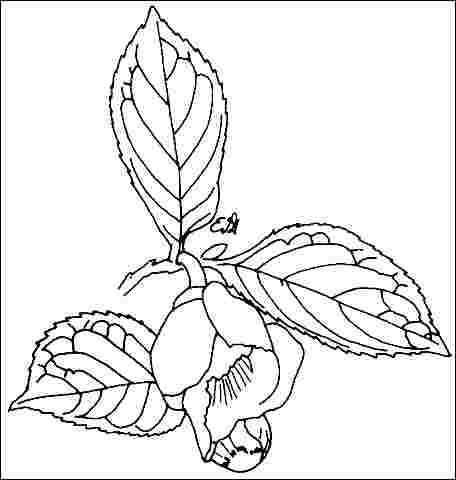Introduction
Capable of reaching 50 feet in height, Korean stewartia is most often seen at 20 to 30 feet, its short, interwoven branchlets forming a dense, pyramidal canopy which casts deep shade below this deciduous tree. The one to four-inch-long by one to three-inch-wide dark green leaves often turn to lovely shades of orange, red, or purple in the fall but this is not a reliable occurrence. Over a several week period in June to July, Korean stewartia is decorated with lovely, pure white, yellow-centered blossoms, three-inches-across and flattened, appearing much like a single camellia flower. Each flower is open for about 24 hours and they attract bees. Most other trees have finished flowering by the time these flowers emerge. The bark of Korean Stewartia is probably the most outstanding characteristic, with orange/brown patches showing through the flaking, grey bark.

General Information
Scientific name: Stewartia koreana
Pronunciation: stoo-AR-tee-uh kor-ee-AY-nuh
Common name(s): Korean stewartia
Family: Theaceae
USDA hardiness zones: 5B through 7B (Fig. 2)
Origin: not native to North America
Invasive potential: little invasive potential
Uses: specimen; deck or patio; street without sidewalk; container or planter; espalier; parking lot island 100-200 sq ft; parking lot island > 200 sq ft; sidewalk cutout (tree pit); tree lawn 3-4 feet wide; tree lawn 4-6 feet wide; tree lawn > 6 ft wide; highway median
Availability: not native to North America

Description
Height: 20 to 30 feet
Spread: 15 to 25 feet
Crown uniformity: symmetrical
Crown shape: upright/erect, pyramidal
Crown density: dense
Growth rate: slow
Texture: medium
Foliage
Leaf arrangement: alternate (Fig. 3)
Leaf type: simple
Leaf margin: serrate
Leaf shape: elliptic (oval)
Leaf venation: pinnate, brachidodrome
Leaf type and persistence: deciduous
Leaf blade length: less than 2 inches, 2 to 4 inches
Leaf color: green
Fall color: orange, red, purple
Fall characteristic: showy

Flower
Flower color: white/cream/gray
Flower characteristics: showy
Fruit
Fruit shape: oval, round
Fruit length: 1 to 3 inches
Fruit covering: dry or hard
Fruit color: red
Fruit characteristics: attracts birds; not showy; fruit/leaves not a litter problem
Trunk and Branches
Trunk/bark/branches: branches don't droop; very showy; typically multi-trunked; thorns
Pruning requirement: little required
Breakage: resistant
Current year twig color: gray, green
Current year twig thickness: thin, medium
Wood specific gravity: unknown
Culture
Light requirement: full sun, partial sun, or partial shade
Soil tolerances: clay; sand; loam; acidic; well-drained
Drought tolerance: moderate
Aerosol salt tolerance: unknown
Other
Roots: not a problem
Winter interest: no
Outstanding tree: yes
Ozone sensitivity: unknown
Verticillium wilt susceptibility: unknown
Pest resistance: free of serious pests and diseases
Use and Management
This tree can be used in much the same way as Japanese stewartia. It is unsurpassed as a specimen, but can also be included in a shrub border, planted near a patio or deck to show off the wonderful bark, or used as a multi-trunked street tree planted on 20-foot centers. Set it off as a specimen by placing it in a bed of low, evergreen ground cover.
Korean stewartia should be grown in full sun but reportedly looks best where it can receive some shade during the hottest part of the day. However, there are fine-looking specimens growing in poor clay soil in USDA hardiness zone 7b with no irrigation which are located in full-day sun. The soil should preferably be moist, acid, and supplemented with organic matter. Pruning is seldom required as growth rate is slow and branches normally keep in bounds, staying close to the tight canopy.
Propagation is by seed (with difficulty) or by cuttings.
Pests and Diseases
No pests or diseases of major concern.